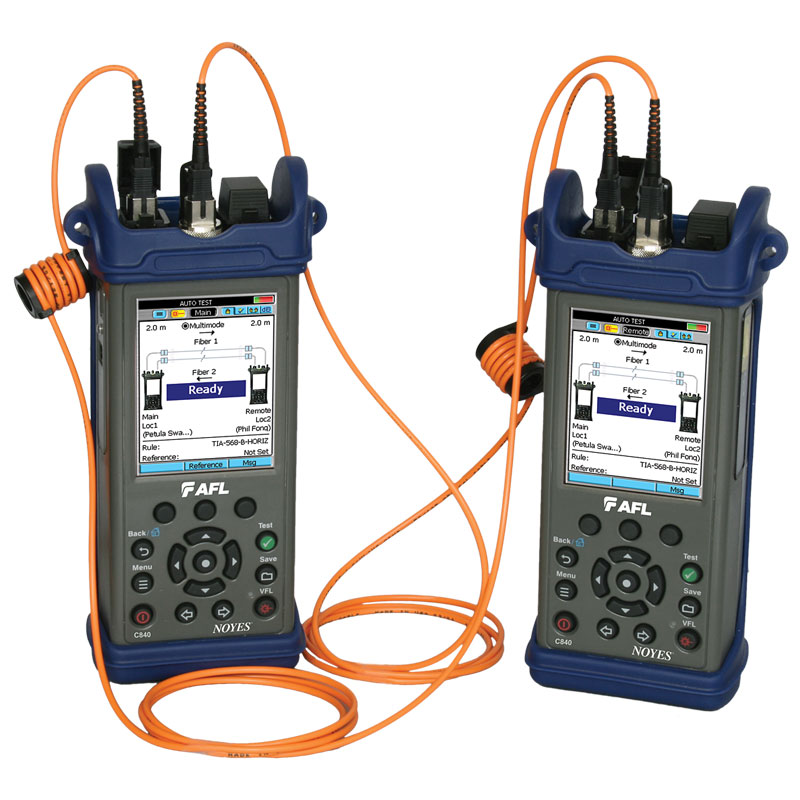Advanced fibre testing equipment detects defects and maintains fibre integrity.
Advanced fibre testing equipment detects defects and maintains fibre integrity.
Blog Article
The Duty of Optical Fiber Screening in Ensuring Quality and Efficiency in Connectivity Solutions
In today's rapidly developing digital landscape, the significance of optical fibre screening can not be overstated, as it serves as a cornerstone for making sure the top quality and performance of connection remedies. As modern technology proceeds to breakthrough, the future of optical fibre screening positions intriguing difficulties and possibilities that merit closer exam.
Significance of Optical Fiber Screening
The relevance of optical fibre screening can not be overemphasized in guaranteeing the honesty and performance of interaction networks. As the foundation of modern telecommunications, optical fibers help with high-speed information transmission, making their integrity essential to operational success. Evaluating offers as a proactive step to recognize potential concerns such as signal loss, attenuation, and physical damages, which can compromise network efficiency.
Routine screening permits the confirmation of installation top quality and the detection of defects that can impact information stability - fibre testing equipment. By employing extensive screening procedures, network drivers can reduce the threats related to network failings, including downtime and economic losses. Optical fiber screening makes certain conformity with industry standards and policies, improving the general high quality of service supplied to end-users.
Eventually, the organized analysis of optical fibers adds to the durability and performance of interaction systems. It makes it possible for stakeholders to make informed decisions concerning maintenance, upgrades, and troubleshooting. In a landscape where information is increasingly important, prioritizing optical fiber testing is vital to maintaining robust and reliable connection remedies, consequently sustaining the needs of contemporary digital settings.
Kinds Of Optical Fiber Tests
Various testing methods are utilized to make certain the performance and integrity of optical fibres within interaction networks. These tests can be extensively categorized right into two major kinds: installation examinations and maintenance examinations.
Setup tests are conducted instantly after the installment of optical fiber cables to confirm their performance and integrity - optical fibre diameter analyser. One of the most common setup tests consist of Optical Time-Domain Reflectometry (OTDR) tests, which examine the quality of the fiber by identifying mistakes or breaks, and end-to-end loss examinations, which gauge the total optical loss from one end of the fiber to the other
Upkeep tests, on the various other hand, are carried out periodically to make certain continuous performance and identify possible problems with time. These consist of aesthetic inspection, which look for physical damages or inappropriate setups, and continuity examinations, which verify that the signal can travel through the fiber without disturbance.
Furthermore, advanced tests such as Polarization Mode Diffusion (PMD) and Chromatic Dispersion (CD) tests can be performed to evaluate the fibre's efficiency under various problems. By employing these diverse screening methods, technicians can preserve high standards of quality and integrity in optical fibre networks.
Advantages of Regular Checking
Normal testing of optical fibers plays a vital role in maintaining the general efficiency and dependability of communication networks. By performing regular evaluations, companies can guarantee that their fibre optic installments meet sector standards and run efficiently. This positive approach helps to determine prospective weaknesses and degradation gradually, permitting for timely interventions before concerns escalate.

Cost-effectiveness is one more advantage. read this post here By resolving small issues early, companies can prevent the high costs linked with major repairs or system failings. Regular screening likewise fosters conformity with regulatory needs, guaranteeing that the network sticks to needed safety and efficiency requirements.
Common Concerns Determined
Identifying usual problems in optical fibre networks is necessary for preserving optimum efficiency and dependability. Various factors can add to disturbances, including physical damage, inadequate setup methods, and ecological influences.
Physical damages, such as bends, breaks, or abrasions, can significantly degrade signal top quality. Incorrect installation strategies, consisting of excessive tension or inadequate safeguarding of cables, might cause enhanced attenuation and loss of connection. In addition, ecological elements such as temperature level variations, moisture access, and rodent interference can compromise the honesty of the fibre.
Connector problems additionally frequently develop, with improper positioning or contamination leading to raised insertion loss. Additionally, splicing mistakes can introduce substantial signal degradation otherwise executed with precision.

Resolving these usual problems through regular optical fibre screening not just improves network reliability but also optimizes total efficiency, making certain that connection solutions remain robust and efficient.
Future Trends in Evaluating
As the need for high-speed connectivity continues to increase, the future of optical fiber testing will significantly focus on automation and advanced analytics. The assimilation of expert system (AI) and artificial intelligence (ML) in screening procedures will certainly allow a lot more effective data analysis and predictive maintenance, reducing downtime and improving total network integrity. Automated screening remedies will certainly streamline the evaluation and certification of fibre networks, lessening human mistake and boosting testing throughput.
One more substantial fad is the adoption of remote testing innovations. As the implementation of fiber networks broadens right into remote and underserved locations, remote testing capacities will certainly permit specialists to check and diagnose network problems without physical visibility, consequently reducing functional prices and enhancing feedback times.
Additionally, there will certainly be a change in the direction of even more comprehensive testing standards that include not just traditional loss measurements yet also performance metrics such as latency and data transfer usage. This alternative approach will certainly help with better network monitoring and optimization approaches.
As these fads develop, the optical fibre testing landscape will not only boost the high quality and performance of connection options but additionally sustain the growing complexities of modern-day communication networks.
Final Thought
In verdict, optical fiber screening serves as a fundamental element in maintaining the integrity and efficiency of communication networks. The ongoing commitment to normal screening Look At This not only enhances information transmission but additionally straightens with market requirements, promoting reliability in network frameworks.
Report this page